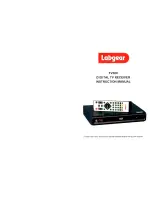
INSTALLATION APPROVAL
TEST PROCEDURE
NAT Part #:
NTX138
Description:
Remote Mount FM Transceivers
Document #:
NTX138\634-0
Rev:
1.00
Rev. 1.00
Aug 31, 2001
Page 1 of 7
ENG-FORM: 634-0100.DOT
CONFIDENTIAL AND PROPRIETARY TO NORTHERN AIRBORNE TECHNOLOGY LTD.
1.
Post Installation EMI Test
The purpose of this test is to identify any interference that the NTX138 may cause with
existing aircraft systems.
2. Test
Conditions
The NTX138 should be installed and function tested. The antenna VSWR should be
checked. A forward/reverse power check with an in-line wattmeter should show no
more than 10% reflected power. For the following tests, insure that the transmit power
is set to HI.
3. Methodology
Most of the EMI tests can be accomplished on the ground. In some cases, flight testing is
required or is easier. If the aircraft is approved for IFR operations, then it is mandatory
that interference between the NTX138 and the approach aids be checked in flight.
The GPS should be operational and navigating with at least the minimum compliment of
satellites. The VHF comm should be set to the frequencies indicated with the squelch open.
VOR/ILS/GS receivers should be set to the frequencies indicated and selected for display. If
possible, set up a VOR/ILS ramp test set on the frequencies indicated and adjust the output
until the flags are out of view. The transponder and encoder should be monitored with ramp
test equipment. If possible set the ADF to a nearby navigation station.
Modulate the NTX138 transmitter on the indicated frequencies for at least 20 seconds.
Observe the GPS for any degradation in satellite status or availability or flags. Listen for
any noise or detected audio signals on the VHF comm(s). Listen for any noise or
detected audio signals on the VOR/LOC receiver audio; look for any movement of flags
or needles on the VOR/LOC/GS navigation display(s).
List the power plant, fuel and other electric instruments in the chart provided and note
any anomalies that occur while transmitting. Assess the results.
If the aircraft is equipped with an autopilot or a stability augmentation system, then test
fly the aircraft and verify that the operation of the NTX138 transceiver does not have
adverse effects on these systems. After checking for gross effects at a safe altitude, fly
an approach with each of the different navigation systems coupled to the autopilot (ILS,
GPS etc.) and look for any anomalies.













































